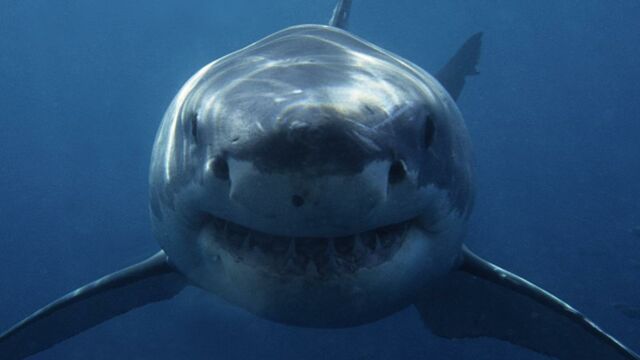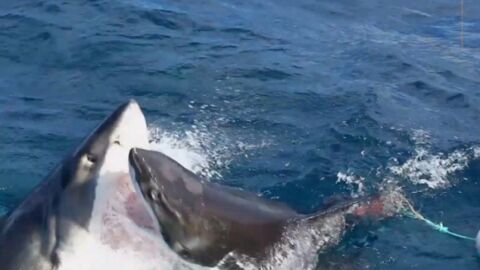A 35-year-old surfer was the victim of a great white shark attack on Saturday 26 June off the coast of California, one month after the publication of an expert report pointing to a resurgence of the predator in the region.
Discover our latest podcast
The man, who was bitten on the right leg, was able to swim to shore at Gray Whale Cove beach, not far from San Francisco, where a team of rescuers treated him and applied a tourniquet. The San Mateo-Santa Cruz unit of Cal Fire, the California Department of Forestry and Fire Protection posted a tweet on Saturday.
INCIDENT UPDATE: Upon arrival at Gray Whale Cove firefighters/paramedics found a male on the beach with a confirmed bite to his body. Patient was treated with advanced life support measures and transported to a local trauma center in serious condition. pic.twitter.com/z3dcy9gTR6
— CAL FIRE CZU (@CALFIRECZU) June 26, 2021
'Ten lacerations on the back of the right thigh'
He was transferred to Zuckerberg San Francisco General Hospital, San Francisco's main public hospital, and got discharged on Sunday. San Mateo Fire Department Battalion Chief Brian Ham told local media outlet KPIX-TV:
It was just a bite wound, and there were about 10 lacerations on the back of his right thigh
Usually (sharks are) in the surf zone, so they're within 30 to 60 yards of the beach. It's shallow but a shark can attack very close to the beach.
The San Mateo County Sheriff's Office said the shark, a great white, was estimated to be between 2 and 2.5 metres in size, based on the surfer's injuries. It was therefore likely to be a young specimen.
A resurgence of great white sharks in the region
The attack came just over a month after the publication on 19 May of a report. This report highlighted the growing presence of great white sharks in the region, and more specifically in the 'red triangle' of northern California.
But that's not all bad news. According to the researchers, supported by Oregon State University, the increase is a 'clear indication' that ocean conditions have been improving in recent years.
Paul Kanive, lead author of the study, told Newsweek:
The results are a good indicator of the overall health (of the ocean ecosystem). As a top predator, white sharks need a healthy structure of other animals at lower levels of the food chain. The white shark's preferred prey, coastal seals and sea lions, have rebounded to very high numbers, providing sustainable and abundant food sources for the sharks















